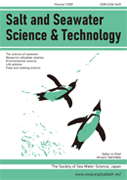Volume 2
Displaying 1-12 of 12 articles from this issue
- |<
- <
- 1
- >
- >|
-
2022Volume 2 Pages 1-2
Published: 2022
Released on J-STAGE: March 29, 2021
Download PDF (650K) -
2022Volume 2 Pages 3-9
Published: 2022
Released on J-STAGE: June 11, 2021
Download PDF (2116K) -
2022Volume 2 Pages 10-16
Published: 2022
Released on J-STAGE: July 10, 2021
Download PDF (1201K) -
2022Volume 2 Pages 17-18
Published: 2022
Released on J-STAGE: July 31, 2021
Download PDF (1060K) -
2022Volume 2 Pages 19-21
Published: 2022
Released on J-STAGE: September 15, 2021
Download PDF (1610K) -
2022Volume 2 Pages 22-28
Published: 2022
Released on J-STAGE: September 23, 2021
Download PDF (1815K) -
2022Volume 2 Pages 29-30
Published: 2022
Released on J-STAGE: October 28, 2021
Download PDF (580K) -
2022Volume 2 Pages 31-36
Published: 2022
Released on J-STAGE: November 30, 2021
Download PDF (4759K) -
2022Volume 2 Pages 37-38
Published: 2022
Released on J-STAGE: December 11, 2021
Download PDF (507K) -
2022Volume 2 Pages 39-45
Published: 2022
Released on J-STAGE: February 11, 2022
Download PDF (1650K) -
2022Volume 2 Pages 46-47
Published: 2022
Released on J-STAGE: February 15, 2022
Download PDF (826K) -
2022Volume 2 Pages 48-49
Published: 2022
Released on J-STAGE: February 18, 2022
Download PDF (486K)
- |<
- <
- 1
- >
- >|
